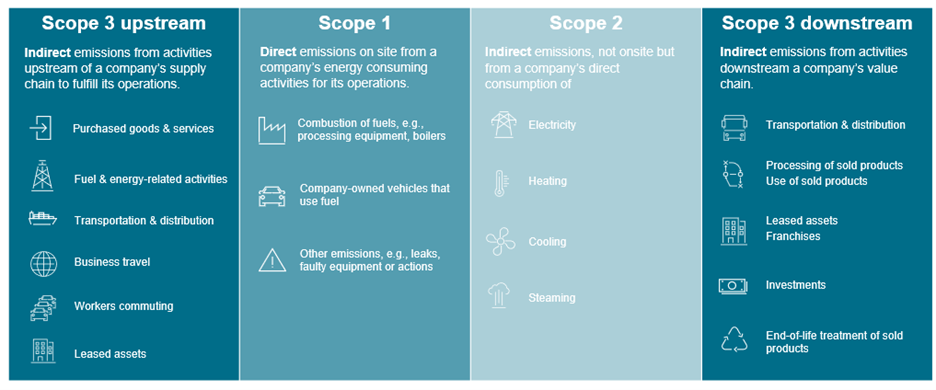Customer Logins
Obtain the data you need to make the most informed decisions by accessing our extensive portfolio of information, analytics, and expertise. Sign in to the product or service center of your choice.
Customer LoginsAcross the world, regulatory frameworks like EU’s CSRD and California’s SB 253 are pushing manufacturers and financial investors to disclosure their carbon footprints.
Upstream materials, goods and services often contribute 15-20% of a traditional automaker's and auto supplier's carbon profile. But understanding your carbon footprint and benchmarking against your peers is challenging.
- Quantifying a carbon profile is complex, especially for Scope 3, Category 1 (Upstream goods and services).
- Public data resources are hard to access and often times inconsistent.
- Value chain carbon accounting requires a combination of data from different sectors (energy, supplier, materials, etc.).
- Many manufacturers lack in-house expertise in climate modeling and carbon markets.
S&P Global Mobility can help. With our Carbon Accounting Upstream Solution – you can quickly and easily access upstream carbon outputs by manufacturer, brand and vehicle. With our proprietary information you can:
- Quantitatively assess the material-based carbon footprint and decarbonization trajectories
- Manage sourcing and/or investment portfolios related to regulatory or reporting requirements
- Identify supply chain carbon hotspots and evaluating decarbonization opportunities
- Inform decarbonization strategies with consistently built global datasets and comprehensively comparable results
View a sample of our Upstream Carbon Data
Introducing Carbon Accounting – Upstream: Scope 3, Category 1
The Sustainable Mobility Scope 3 Category 1 offering provides comprehensive datasets of global car manufacturers' and vehicle models’ upstream material embedded carbon emissions.
Using reliable data sources and a consistent methodology, the database allows automotive stakeholders to:
- Self-report
- Set industry benchmarks
- Track industry/corporate decarbonization target fulfillment
- Plan for competitive strategies
- Make supply chain or investment decisions
Key Features
- Vehicle-by-vehicle production and powertrain/alternative propulsion sourcing
- Global powertrain-based production and sales forecasts by S&P Global Mobility
- Global energy outlook by S&P Global Commodity Insights
- GREET and regional technical guidance on key material compositions and life-cycle carbon factors used in the vehicle body, engine, transmission, and battery
- Life-cycle (environmentally extended input-output, EEIO) based regional key materials carbon factors
- Country/regional energy structure changes for industrial consumption
- Bottom-up methodology built upon millions of global vehicles
- Car manufacturer and vehicle model-level upstream carbon emissions reporting
Use Cases by Industry Stakeholders

Financial Institutions
- Understand how the carbon embedded in purchased goods and services impacts the OEMs and Suppliers in investment portfolios.
- Report on investment portfolio's Scope 3 financed carbon emissions.
- Influence leadership investment decisions.
- Identify investments that have low risk exposure to carbon pricing impacts.
- Access consistent measurement methodology and reliable data across OEMs and Suppliers.

OEMs
- Understand current and future carbon portfolios.
- Identify carbon hotspots in the value chain.
- Assess current and future carbon prices in different climate scenarios.
- Assess what regulations will impact carbon markets.
- Understand how changes to my product portfolio will impact my carbon portfolio.

Auto Suppliers
- Accurately report your carbon profile in sustainability reports.
- Understand future Scope 3 carbon emissions.
- Identify carbon hotspots in the value chain.
- Assess current and future carbon prices in different climate scenarios.
- Improve key areas in the carbon portfolio to appeal to clients.
- Understand how regulations will impact carbon markets.
- Assess how an emission change to a product portfolio can effect overall carbon profiles.
Combine our Upstream Carbon Account solution with our Downstream solution to gain a holistic understanding of carbon emissions across the value chain.
Our Upstream Carbon Accounting Solution (Scope 3, Category 1) can be paired with a Downstream (Use-phase) Solution (Scope 3, Category 11) which accounts for 75-80% of vehicle emissions.


